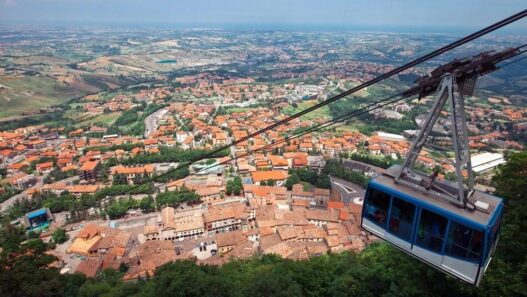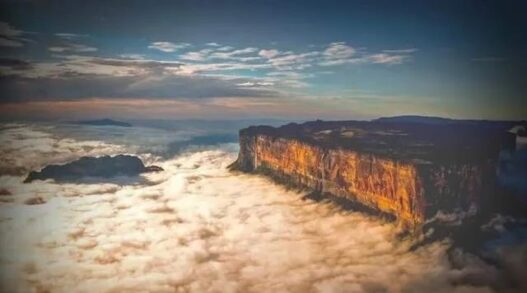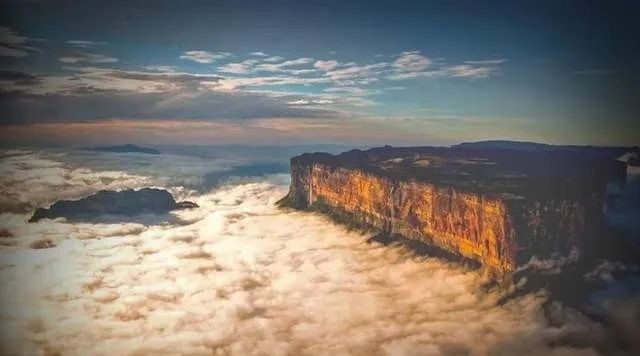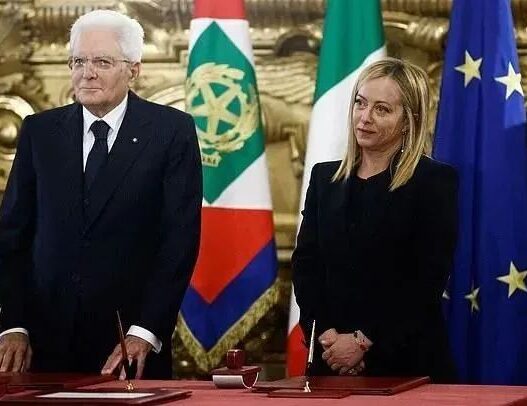Mount Roraima has long been known as a geological marvel, filled with mysteries and inexplicable phenomena. It has been a significant part of many stories and myths, and today, it remains one of the most important locations for researching UFOs and supernatural phenomena.
A Mountain Without Peaks
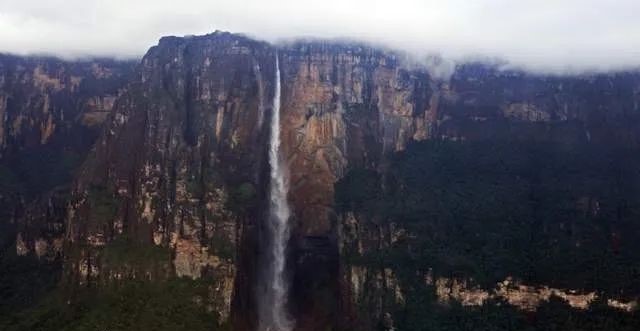
Mount Roraima, known locally as Roraima Tepui or Cerro Roraima, is located in the southeastern part of Venezuela’s Canaima National Park. The geological layers that make up this mountain are the largest of their kind in South America, with Roraima being the highest peak of the Pakaraima Mountains in the northern Guiana Highlands. For over five centuries, it has drawn historians, geologists, and scientists because of its unique structure: a mountain without a peak. There is no other “flat-topped” mountain in the world comparable to it. The summit of Mount Roraima is completely level, covering 34 square kilometers, and surrounded by rare geographic features such as waterfalls and cliffs. This summit is considered one of the oldest geological formations on Earth, dating back to approximately 2 billion years ago, in the Precambrian.
Its shape is peculiar, seemingly carved from one massive rock. The walls of the mountain are completely vertical, and all surfaces are smooth. The sides of the mountain are also extremely steep, rising 400 meters vertically. Being situated on a plateau, it rises more than a thousand meters above the surrounding forested savanna, with an average height of over 2,500 meters above sea level, making it the highest point in the radius of 549.44 kilometers. Scientists believe that Mount Roraima is the result of a past earthquake, but this remains a theory, as no other geological formation has been found with a similar shape. This has led scientists to believe it is one of the oldest rock formations on Earth.
An Inaccessible Paradise
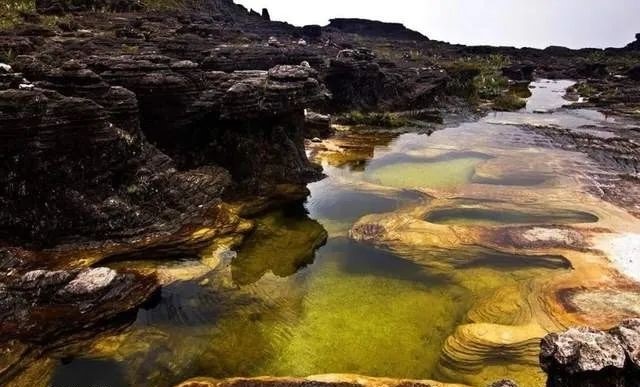
In addition to its unique rock layers, Mount Roraima is home to a wide variety of local flora and fauna. The region experiences almost daily rainfall, creating a unique ecosystem that includes some of the highest waterfalls in the world. The surface of Mount Roraima is black, primarily populated by microscopic algae. However, when there is no rain and sunlight, its true colors emerge. In the hidden corners of the plateau, the algae turn a brilliant pink. About one-fifth of the plateau is covered in water: crystal-clear lakes, bright pink puddles, peat bogs, rushing rivers, and ice crystals covering several hundred meters of riverbeds.
The colorful surface of the Roraima plateau is caused by peat bogs. Here, you can admire the stunning beauty of plants and flowers, such as colorful mosses and bulbous moss carpets. Interestingly, a carnivorous water lily has found refuge at the mountaintop, a result of the constant rainfall. Geologists and biologists estimate that some species, not yet recorded in science, are hidden within this mountain, as much of the area remains unexplored.
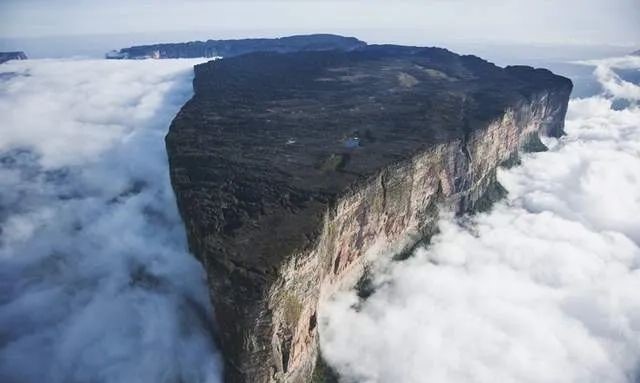
However, studying Mount Roraima in person is difficult. In the 1940s, German explorer Robert Schremberg and British botanist Yves Seyne were the first to describe Mount Roraima. They depicted it as a place with colorful rivers and animals and birds from prehistoric times. In 1884, Swiss writer and explorer Everard de Turen led a team to climb the mountain using a wooden ladder-like slope attached to one side of the plateau wall, but they did not reach the summit.
Juan Ángel’s Exploration
In 1935, Venezuelan pilot Juan Ángel revealed the true nature of Mount Roraima, an event resembling an adventure novel. One day, while flying over the Orinoco River, Juan Ángel got lost. After wandering in the dense jungle, he discovered that he was flying over an uncharted river on the local maps. Believing the river would eventually lead him out of the jungle, he continued following its course. However, he soon realized he was no longer flying over the jungle but between two mountains. Though it was difficult to climb, he eventually landed on a plateau – the summit of Mount Roraima.
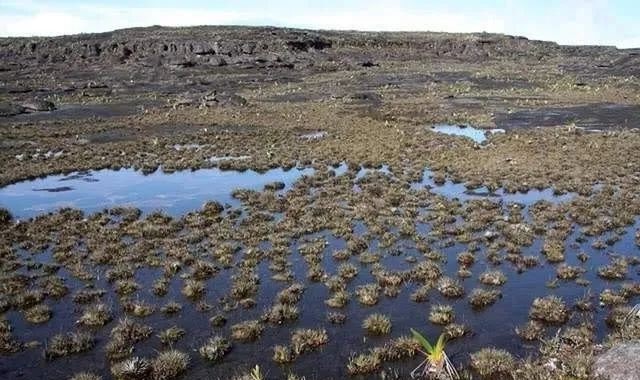
Though he landed safely, trouble awaited him as the plane came to a stop in a swampy area. Ángel had to hike down the mountain, a journey that took more than two weeks.
Upon returning home, he wrote a story about the stunning wildlife he encountered on the mysterious peak. Unfortunately, the public dismissed Juan’s story as the fantasies of a pilot. It wasn’t until the late 1960s that this “fantasy” was confirmed as reality.
The “Lost World” on the Plateau
In the late 1960s, an expedition was organized to Mount Roraima. The leader of the expedition was Roland, the son of the famous French pilot and national hero Roland Garros. During the expedition, Roland and the indigenous views of the Americas aligned, agreeing that Roraima was indeed a cursed place, as lightning struck it incessantly. On this nearly 34 square kilometers of plateau, hardly a patch of land had not been struck by lightning.
They also discovered many extraordinary places. For example, they found the world’s largest waterfall, which turned out to be the source of a river. The reason was simple: it was situated at the highest point of the plateau! Surprisingly, the prehistoric animals from Arthur Conan Doyle‘s The Lost World became a reality. At first, the expedition did not encounter any unusual animals: opossums, lizards, black frogs, spiders, and snakes appeared before them. Though there were some scientifically unknown species of butterflies, nothing seemed extraordinary.
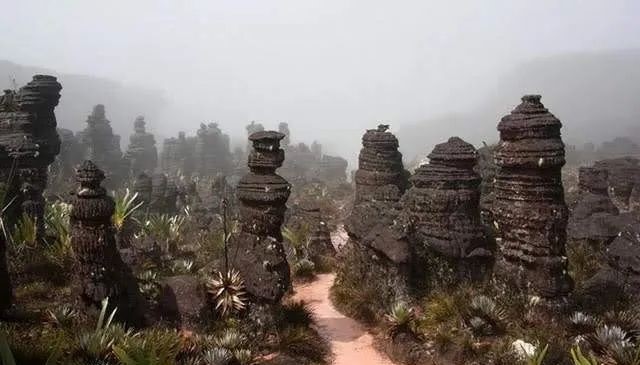
But only a few days later, the researchers encountered the first magical animal that could comfortably live in the “Lost World.” It was a 15-meter-long snake with a peculiar head and unusual protrusions along its back. Following the snake, travelers saw ants over 5 centimeters long and frogs that laid eggs like birds.
Fortunately, the explorers never encountered dinosaurs, but they did find many prehistoric animal remains that seemed to have died recently. Among all the wonders, the expedition stumbled upon a completely barren circular area near the waterfall, covered with a strange silver metallic powder. Subsequent chemical analysis revealed that this powder could not be obtained under terrestrial conditions.
Mount Roraima’s Mythology
For the indigenous people of South America, this mountain had long been a sacred site. The myths and legends of the Pemón people, the Kapan people, and several other indigenous groups in South America feature Mount Roraima as a central figure, especially in cosmological origin stories.
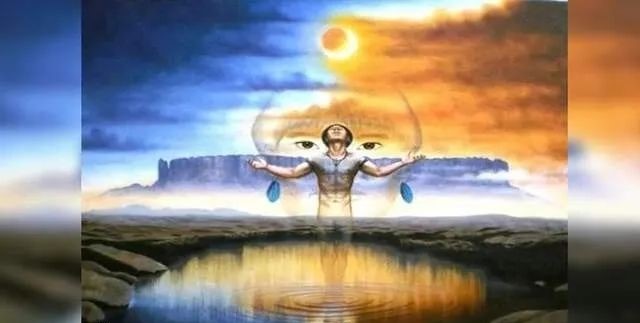
In the Pemón language, “Rorai” means “bluish-green,” and “ma” means “large.” Thus, the name Roraima, when translated from the Pemón language, means “the great bluish-green mountain.” According to their belief, this mountain is the stump of a majestic and powerful tree, and all the fruits and tubers in the world grow on this tree. The legendary hero Makunema cut down this giant tree, causing a massive flood when its bucket fell to the ground.
In the early 21st century, the world’s largest quartz cave system was discovered on Mount Roraima. This cave system stretches nearly 11 kilometers and descends 72 meters deep. What makes it unique is that it has 18 exits. Interestingly, in this cave, scientists discovered many rock paintings depicting unusual animals and humanoid creatures, which bear only a slight resemblance to humans. These myths and discoveries have led some researchers to raise new speculations about the mountain’s origins.
A Monumental Mystery?
German researcher Peter Boll, known for his “Hollow Earth” theory, believes Mount Roraima is not a natural mountain but an artificial pyramid. He finds the shape of the mountain particularly interesting, as it seems carved from a single massive rock. Its vertical walls are smooth, and some details appear to show human-made traces. For example, on one 230-meter-high vertical edge, there are two identical symmetrical oval grooves. Their symmetry suggests that these surfaces were artificially shaped.
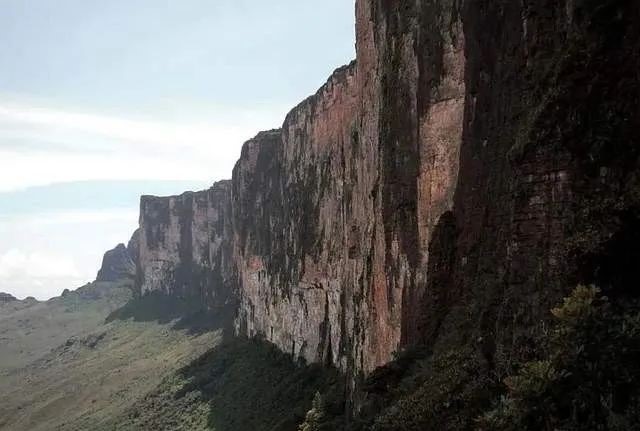
Boll believes we are looking at a monument, which was once a huge pyramid, created by a highly advanced civilization. The myths of South American indigenous peoples support this idea. Regarding its possible use, Boll suggests it could have been an “airport,” with underground caves actually serving as tunnels connecting internal rooms. The entire mountain may have been a massive, special structure.
UFO Sightings
In addition to local legends and myths, visitors from around the world have witnessed many strange events on Mount Roraima. One of the most famous incidents occurred when Dilia Hoffman de Mir, along with others, witnessed “close encounters of the third kind” in the town of Santa Elena. Dilia reported seeing an unidentified flying object land on the “airport” at the top of Mount Roraima, causing widespread power outages in the area. This event was later investigated by the U.S. Congress as part of its inquiry into UFO phenomena, and it was included in the famous Blue Book project. Many visitors have reported seeing strange rotating luminous objects hovering above or between Mount Roraima and the nearby Tepui Mountain, Kukannan.
Many people who have climbed Mount Roraima report experiencing strange events while exploring the area. Numerous travelers have reported altered states of consciousness, seemingly entering a trance or hypnotic state, with some even dreaming of extraterrestrials.
David Joshua Jennings

Famous photographer David Joshua Jennings once wrote a review about
Mount Roraima. According to him, it felt very strange when one reaches the top. Notably, he never believed he was going mad nor did he believe in supernatural phenomena. But once he reached the summit, he felt as if invisible beings were surrounding him. Some people believe this is because they were in a high-energy zone, similar to places like Stonehenge or the Bermuda Triangle. Some tour companies also promise to show visitors the supernatural side of Mount Roraima. Although it sounds strange, this is not entirely unusual. From Chaco Canyon in New Mexico to ancient Egypt, ancient sites around the world seem to attract UFO sightings.
Today, tourism has threatened Mount Roraima. Some people even steal quartz from the Roraima Crystal Valley, and the Roraima bush toad is listed as a vulnerable species by the International Union for Conservation of Nature. As the constant flow of tourists began to damage the landscape, the Venezuelan National Park Association limited the number of visitors to the summit. Let’s hope this earthly paradise can preserve its mystery for generations to come.






